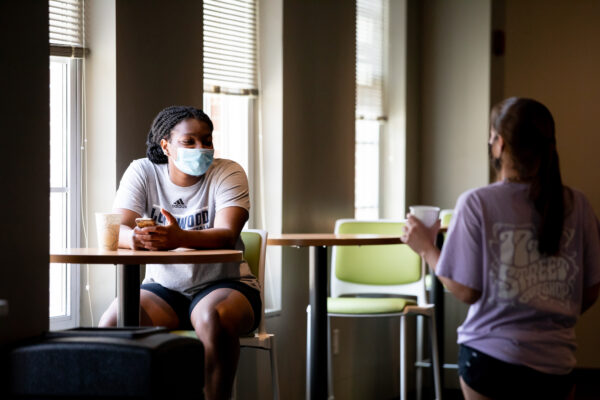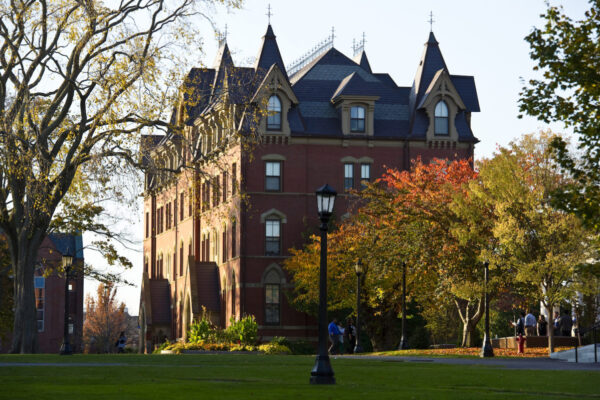President Emeritus Leo Lambert of Elon University (NC) says it will take courage, moral leadership, and political will to solve the crisis of gun violence at colleges and universities and K-12 schools.
Several years ago, our campus avoided a potential disaster involving an armed individual intent on causing serious harm. Especially in light of the horrific murders of 17 high school students at Marjory Stoneman Douglas High School in Parkland, Florida, lessons from our campus experience may be instructive for campus safety officials, administrators, and policy makers.
As our students were returning following a holiday weekend, the 911 dispatch received a telephone call from parents hundreds of miles removed from us. These parents expressed concern that their child—a student at another institution—might be dangerous to self or others and heading in our direction; their child’s ex-significant other was a first-year student on our campus. These parents also had the presence of mind to call and warn the Elon student, who independently informed the university police department. And these timely warnings saved the day. The student had made several stops on the trek to our campus to purchase weapons, ammunition, and other materials.
We were very, very lucky. The parents showed great responsibility in alerting all affected parties of a potential threat to the safety of their child and the university. Our student also took the matter seriously by notifying university police. Campus police officers performed with a high degree of professionalism, both while the incident was playing out (the armed visitor was intercepted and arrested immediately upon arrival on campus) and afterwards, communicating closely with the district attorney to ensure campus safety would remain a high priority as the case proceeded through the criminal justice and hospital systems.
As president at the time of this incident, I have often felt haunted by how closely our community came to tragedy that weekend. And as hardly a month goes by without reading about another school or campus shooting in our nation, I have some reflections on the subject of guns on college campuses.
In general, and with very few exceptions, such as the sport of rifle, weapons and college students on a residential campus make a toxic combination. Some will disagree, but to me, this is only common sense. Every college president I know can tell tragic stories involving intoxicated late-adolescents who uttered words such as, “Wouldn’t it be funny if…?” and then faced sometimes life-altering consequences after acting on some very bad impulses. Adding firearms to this environment is lethal.
In American society today, weapons are worrisomely easy to obtain. The student who travelled to our campus planning to commit harm bought a weapon at one Walmart on one side of town and, shortly thereafter, ammunition at a second Walmart on the other side of town. These sales were perfectly legal. Only those “adjudicated mentally ill,” (being found a threat to themselves or others) are barred from making such purchases, as we later learned from the Bureau of Alcohol, Tobacco, Firearms and Explosives. We urgently need a screening process for the purchase of firearms that is at least as rigorous as obtaining a driver’s license, if public health is to be protected. And kudos to business leaders like Dick’s Sporting Goods CEO Edward Stack, whose stores will no longer sell guns to people under 21 years of age or sell assault rifles or high-capacity magazines. Moral leadership like Mr. Stack’s sets a hopeful example.
Also a threat to campus safety are the hazards posed by the dangerous combination of young people with suicidal ideations and access to firearms. The mental health crisis on American college campuses is well documented. The National College Health Assessment reported data in 2017 on the percentage of students who experienced the following within the past 12 months: felt so depressed it was difficult to function (39.1 percent); felt overwhelming anxiety (60.8 percent); and seriously considered suicide (10.3 percent). Suicide is the second most frequent cause of death of college students, and firearms are the most common means of committing suicide in this age group.
For students experiencing suicidal ideation, easy access to firearms flies in the face of common sense. Our campus, like colleges and universities across the country, has dealt with the tragedy of student suicide. In my view, access to guns on college campuses, where students are living in close quarters and often under severe stress, only increases the chances that a student will make an impulsive, irreversible, and possibly life-ending choice.
College leaders also need to better engage with parents and the public at large about the critical importance of timely communications about possible threats, including gun violence, students possibly at the edge of causing self-harm, or other instances that could turn deadly. Information and timely warnings are our best allies, as our experience has taught us. Troubled young people require intervention and support; to isolate them without assistance is dangerous to them and the campus community.
In North Carolina, weapons are banned on all educational property except for handguns locked in vehicles by conceal carry permit holders. But in just one small city in our state, more than 200 guns have been stolen from automobiles—many unlocked—since 2014.
Fortunately in our state, private colleges and universities may assert their private property rights by clearly designating their campuses as weapons-free zones, with the exception of certified law enforcement officers. Private college presidents must be vigilant in protecting that right to protect the health and safety of their campuses.
Another area requiring courageous leadership in the public square is to fund research related to gun death prevention through the Centers for Disease Control and Prevention (CDC) and the National Institutes of Health (NIH). According to the Journal of the American Medical Association, the CDC has not funded research into the prevention of gun violence for two decades, since the Dickey Amendment was passed in 1997, which states, “None of the funds made available for injury prevention and control at the Centers for Disease Control and Prevention may be used to advocate or promote gun control.” The chilling result has been that research funding on gun death prevention at the federal level is practically non-existent.
The epidemic of mass shootings in the United States has changed the landscape of American higher education. Since the mass shooting at Virginia Tech in 2007, where a gunman killed 32 people and himself, most schools have installed sirens and early alert systems. Administrators conduct “live shooter on campus” simulations on a regular basis. Students, faculty, and staff participate in online training on how to react if one hears gunshots. Faculty are calling for stronger classroom doors. Institutions have organized services after Sandy Hook, Pulse nightclub, Parkland, and so many more, causing these observances to sometimes feel numbingly routine.
But students should not have to live like this. Neither should those of us who work on college campuses and in schools across the nation. Colleges and universities and schools should be about learning, full stop—not live shooter drills. We are in the midst of a public health crisis in education and it will take courage, moral leadership, and the political will of the American people to solve it.
If you have any questions or comments about this blog post, please contact us.


